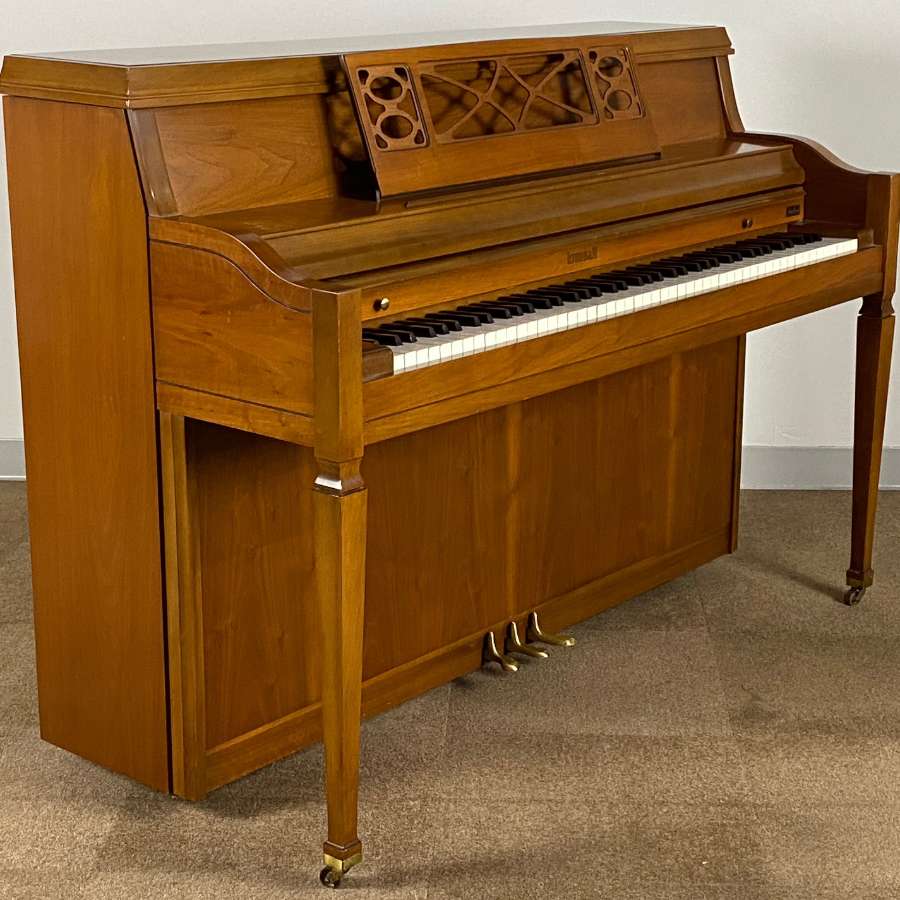
It has one, two or four internal speakers (depending on the model), but can also be connected to an external amplifier. The instrument is fitted with a mechanical sustain pedal. Most Wurlitzer pianos are 64-note instruments whose keyboard range is from A an octave above the lowest note of a standard 88-note piano to the C an octave below its top note. This induces an electrical current in an electrostatic pickup system running at 170 V DC. However, the sound is generated electromechanically by striking a metal reed with a felt hammer, using conventional piano action. The official name of the instrument is the Wurlitzer Electronic Piano. Problems playing this file? See media help. However, the action and performance of the instrument has meant it is stable enough to be used for years.Ī Wurlitzer electronic piano, showing the velocity sensitivity Several electronic keyboards include an emulation of the Wurlitzer.Īs the Wurlitzer is an electromechanical instrument, it can need occasional maintenance, such as replacing and re-tuning broken reeds.

The stage instrument was used by several popular artists, including Ray Charles, Joe Zawinul and Supertramp. However, it was adapted for more conventional live performances, including stage models with attachable legs and console models with built-in frames. Originally, the piano was designed to be used in the classroom, and several dedicated teacher and student instruments were manufactured. The first Wurlitzer was manufactured in 1954, and production continued until 1983. The instrument was invented by Benjamin Miessner, who had worked on various types of electric pianos since the early 1930s. It is conceptually similar to the Rhodes piano, though the sound is different. Sound is generated by striking a metal reed with a hammer, which induces an electric current in a pickup. The Wurlitzer electronic piano is an electric piano manufactured and marketed by Wurlitzer from the mid-1950s to mid-1980s. Print.A Wurlitzer 200A, the most commercially successful model Pierce Piano Atlas: Anniversary Edition, 2017 Our 70th Year. Talk with one of our team members today about its value. We understand the importance of maintaining the defining historical characteristics of a piano.ĭo you have a piano produced by the Wurlitzer company? At Lindeblad, we have worked on many Wurlitzer pianos and their affiliated brands. That said, for the early 1900 Wurlitzers restored with historical accuracy in mind, the value could be up to $20,000. With the wide range of piano types and styles, the restored value can widely range. Whether it was passed down through a family or purchased in the early 1990s under Baldwin’s production, Wurlitzer pianos maintain their value relatively well. īecause of the popularity of the brand, many Wurlitzer piano owners are curious about the value of their instrument. For this reason, they were found in many cafés, homes, and studios throughout the 1900s.

Especially when they went to market with their upright, Spinette model pianos, Wurlitzer was targeting the everyday American audience. Most popular as an early American brand, Wurlitzer is iconized as a well-made, good-sounding piano. From various stylistic influences such as Florentine, Spanish and French, to entirely different models like spinet, upright, grand / baby grand, and electronic, Wurlitzer is a diverse brand known for many different aesthetics. The Wurlitzer piano brand can be found on a wide range of pianos. In the early 1990s, having recently acquired Chickering pianos, the company’s ownership was in flux and was bought by Baldwin in 1995.

Throughout the 1990s, the following piano brands were produced and owned by the Wurlitzer name: Apollo, Julius Bauer, Melville Clark, De Kalb, Farney, Kingston, Student Butterfly Clavichord, Kurtzmann, Merriam, Schaff Bros., Spinette Strad and Underwood. Many instruments were imported from Europe and sold under the Wurlitzer company name.īy 1914, when Rudolph Wurlitzer died, the company footprint had expanded across the United States, with factories for building vertical pianos in North Tonawanda, NY, and grand pianos in de Kalb, Illinois. Well in the 1900s, Wurlitzer Company was known for the variety of instruments they sold, including pianos, organs, jukeboxes, melodeons and more.

Dating back to the 17th century, the Wurlitzer family history started with Hans Andreas Wurlitzer, a renowned violin maker. The Wurlitzer Company was established in 1856 by Franz Rudolph Wurlitzer, who started the business from a long family foundation of instrument making. Piano production by Wurlitzer began in 1880 in the Wurlitzer factory in Cincinnati, Ohio.


 0 kommentar(er)
0 kommentar(er)
